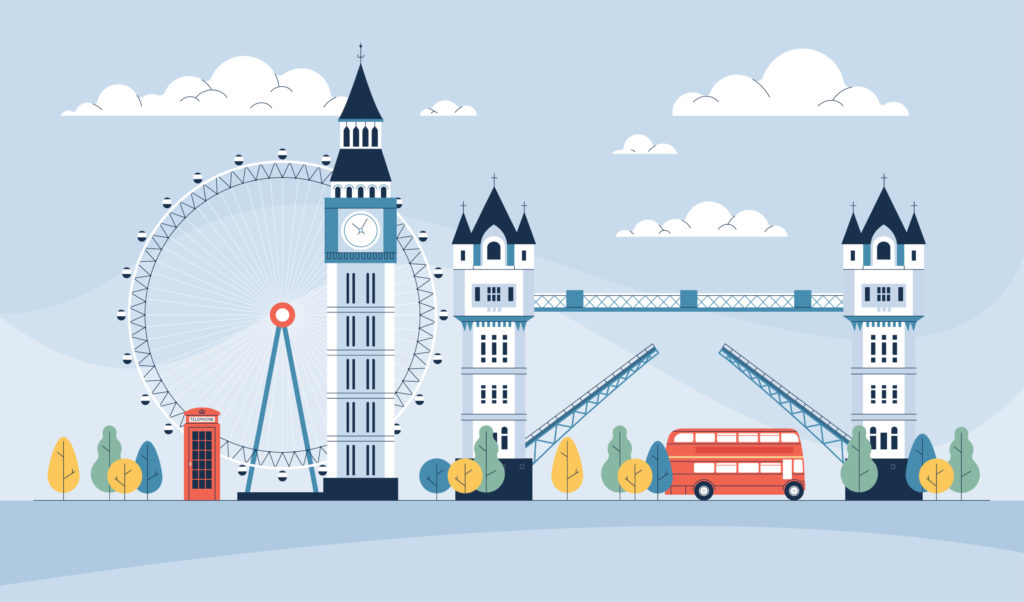London is quite probably the greatest capital city in the world, thanks to its long history, sheer size and amazing diversity. There is something new to see, enjoy, explore and learn during every visit. So much so, in fact, that to try and fit everything into one article would be impossible. You would spend so long reading it that you wouldn’t have time to actually go and see all the amazing sites and attractions for yourself!
So, this article will simply offer eight eccentric facts that you may or may not already know about England’s vibrant capital city. Hope you read something that captures your imagination and inspires you to seek out some more of secret London’s cultural treasures, favourite traditions and historical landmarks over the coming months.
- Taxis and Minicabs in the Capital
London’s earliest road-going taxis (as opposed to river boats) were horse-drawn Hackney carriages taking wealthy passengers where they needed to go. Man-powered sedan chairs were also an option for shorter journeys. Now, people looking to hail rides across London have a wide range of options, including comfortable and convenient taxis and minicabs.
- The Hidden River
Londoners and tourists alike are familiar with the capital’s network or roads, rails and underground tube routes. However, did you know that there are thought to be as dozens of hidden rivers and canals flowing underneath the streets? Mainly hidden from sight, the waterways include the Fleet, the Tyburn, the Neckinger and Earl’s Sluice. They often originate under parks and flow towards and into the highly visible river Thames.
- The Oldest Underground in the World
London’s oldest underground line is the Metropolitan railway, running between Paddington and Farringdon. It opened in 1863 and was the world’s first underground railway. It is also the second longest metro system in the world, covering the vast majority of the city. Such a large network provided excellent connections for people wishing to continue their journeys beyond the London underground by minicab.
- Famous London Markets
London is well-known for its markets, which brim with top-quality edible produce, amazing fashion finds and friendly stallholders. Some of these markets date back hundreds of years and have a long and colourful history of trading. These include Covent Garden, Portobello Market, Borough Market, Camden Market and Old Spitalfields Market. These popular places are always bustling and full of atmosphere, especially at the weekend.
- Fun London Eye facts
Construction of the London Eye started in 1998, with the famous landmark opening in December 1999 as part of the UK capital’s Millennium celebrations. It has 32 capsules to represent London’s 32 boroughs and can carry up to 800 people per rotation. On a clear day, you can see all the way to Windsor, around 40 miles away. The London Eye’s weight is approximately 2,100 tonnes – the same as 1,272 London black cabs. There have been more than 5,000 marriage proposals at the London Eye, which receives more visitors annually than the Taj Mahal or Great Pyramids of Giza.
- The London Stone
London has its very own historical stone landmark with a rich heritage to rival that of Stonehenge. Thought to come from Roman times, the London Stone is housed at 111 Canon Street in the City of London. It measures 53x43x30cm and was thought by some to be a Roman milestone and by others to be a Druidic altar. Whatever its original purpose, the London Stone is one of the oldest and most intriguing attractions that secret London has to offer. Some believe that if it is ever moved out of London, the city will be thrown into jeopardy.
- Terror at Tower Bridge
One of London’s most famous bridges over the river Thames is also one of the spookiest. Tower Bridge is thought to be haunted by a woman in black – and a British policeman seen patrolling the area after dark. This could stem from the fact that one of the bases used to be home to a morgue. Bodies would be brought by boat and stored there until they were moved to their final resting place.
- London is Technically a Forest
According to the UK definition of a forest, London qualifies. Any area that is made up of at least 20% trees can call itself a forest. London boasts around 21% coverage with 8.3 million trees – almost enough for the city’s population off 8.6 million people. Every year, Norway sends a Christmas tree to be erected in London’s Trafalgar Square to thank Britain for its support during the Second World War. Thus, temporarily increasing London’s urban forest quota by one tree each December.

